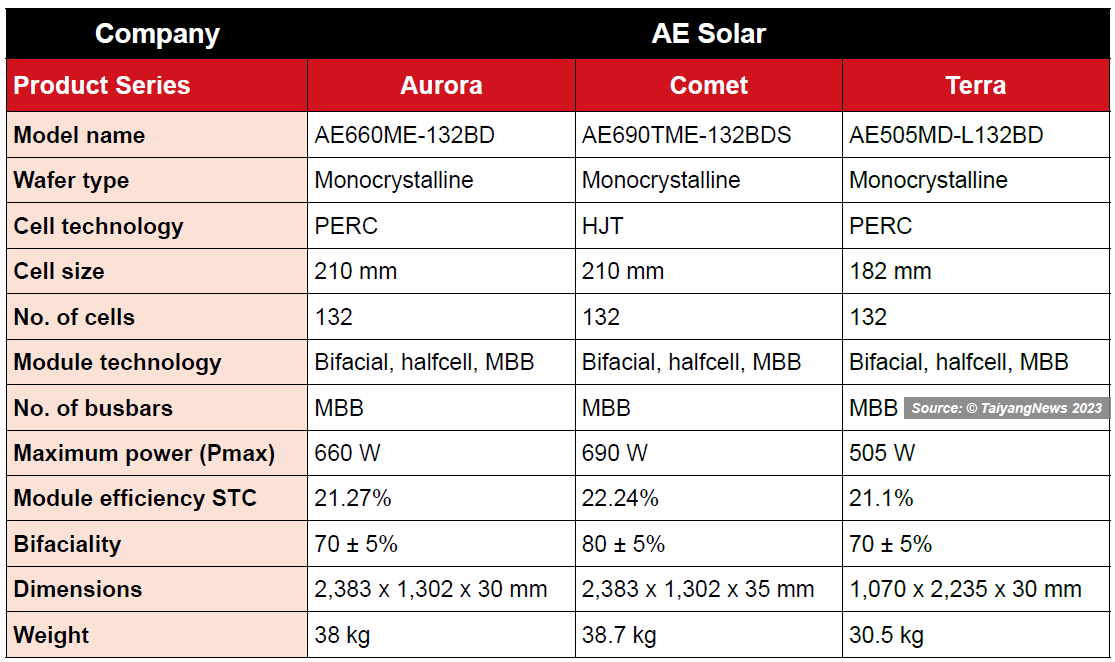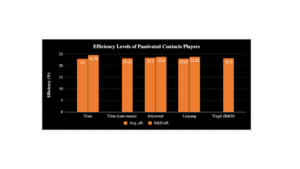- AE Solar’s other product offerings include the Aurora series (PERC), Comet series (HJT), Meteor series (TOPCon), and Smart HSF series (rooftop)
- The Terra module series is well-suited for both utility-scale solar projects and AgriPV applications, with both PERC and TOPCon cell technologies, and with power ratings of 550 W and 575 W, respectively
- The key innovation of the Terra module is its interconnection design, which results in increased shading tolerance and no shading on the rear side.
AE Solar is a Germany based technologically driven solar module manufacturer that has been in operation since 2003 with activities spanning across 100 countries. The company has a wide range of products for utility-scale solar projects, rooftop solar installations, and AgriPV projects. AE Solar promotes a wide range of new modules, including the innovative shade-resistant Terra series. The head of R&D at AE Solar, Hamed Hanifi, presented the key features of the Terra series at the TaiyangNews conference.
Before going into the details of the Terra series, Hanifi presented an overview of AE Solar’s product range. The company’s mainstream product is the Aurora series, which is based on PERC. It has the highest flexibility with electrical properties, dimensions, and bill of materials. The HJT products, grouped under the Comet brand, are ideal for use in low-light and high-temperature conditions. The Meteor series is based on TOPCon technology and is the most durable product in AE Solar’s lineup. The company is also promoting modules for repowering applications, which Hanifi says is a growing market. Smart HSF is an exclusive product series for rooftop applications. (Dr. Hamed Hanifi talked about rethinking of half-cell interconnection and module design that helps boost energy output and durability).
The Terra module series was the top of the line for AE Solar. It is a half-cell module based on PERC or TOPCon technology with a unique interconnection design. This makes the Terra module tolerant to partial shading, especially from the short side. The module also has higher resistance against wind and snow, and is free from self-shading.
Hanifi emphasized the importance of the Terra module series in the current context. He pointed out that Europe plans to install 1 terawatt of solar power by 2030. However, land is limited in Europe, and the cost of land acquisition is increasing. Hanifi presented data showing that the price of land has increased 276% over the past 23 years, while the price of solar modules has decreased by more than 90%. This makes it increasingly important to optimize the use of land for solar power generation. Reflecting on this, Hanifi discussed 2 scenarios: increase the installed modules per unit, i.e., installing the strings (rows) closely by accepting a partial shading to an extent; and double usage of land with AgriPV.

The company’s Terra series can be a good choice for both these applications. It is slated for launch by end-2023 with both PERC as well as TOPCon cell technologies, and with power ratings of 550 W and 575 W, respectively. Distinguishing itself with a uniform design, the Terra is a half-cell module devoid of any midsection separation, offering choices between an aluminum and plastic frame. The technical highlight of the module is that the module on the rear side has no cell shading from junction boxes, cables or frame. It is highly resistant to snow and wind, and is shading tolerant, especially on the shorter side.
The key innovation of the module is its interconnection. A typical half-cell module follows a mirrored design that connects all the solar cells in the top part of the module in series and the same goes for the bottom part of the module. These 2 halves are then connected in parallel at the middle of the module.
The Terra series uses an interconnection design where 2 sub-strings are connected in parallel, and this twin sub-string is then connected in series with the next twin sub-string. This results in similar electrical properties to a mirrored design, but with several operational benefits.
One of the benefits of the Terra series’ unique interconnection design is increased shading tolerance. This enables reducing the space between strings when accepting partial shading. Hanifi presented a comparison of change in power when the bottom row of the module is shaded for a full-cell module, a typical half-cell module and the Terra module. The results show that the power loss is close to 100%, 50% and 36%, respectively.
Another important feature of the module is no shading on the rear side, facilitated by the positioning of the junction box, cables and the frame design. This makes the product a good fit for AgriPV applications. The module also has high mechanical stability, yet another feature that makes it suitable for AgriPV.
The text is an excerpt from TaiyangNews New Solar Products Overview H1/2023, which can be downloaded for free here.


